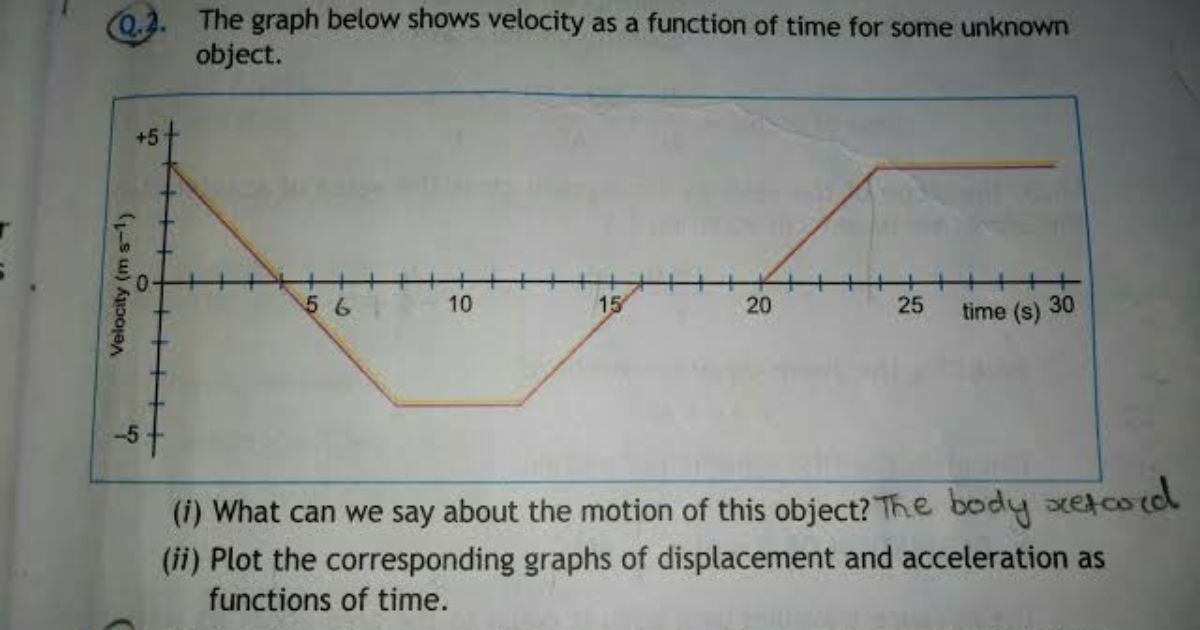Understanding motion is one of the foundational concepts in physics. Motion surrounds us—cars on roads, planets orbiting stars, birds flying in the sky, and even microscopic particles moving inside our bodies. But how do we describe this movement scientifically? What can you say about the motion of an object? This question opens up a world of discussion that includes definitions, types, causes, and laws of motion.
In this comprehensive article, we will explore what motion is, how to identify it, the types of motion, the laws that govern it, and real-world examples. We’ll also look at how motion is measured and understood from both classical and modern physics perspectives.
Defining Motion
Motion is defined as the change in position of an object with respect to a reference point over time. It is a relative concept, meaning it depends on the observer’s frame of reference.
For example, a person sitting on a moving train appears to be stationary to a fellow passenger, but to someone standing on the platform, the person is moving.
Reference Point
A reference point is a place or object used for comparison to determine if something is in motion. If an object changes position relative to this point, it is considered to be in motion.
What Can You Say About the Motion of an Object?
To answer this fully, we need to consider several aspects:
- Is the object in motion or at rest?
- What type of motion is it experiencing?
- What are the parameters describing the motion? (speed, velocity, acceleration, etc.)
- Is the motion uniform or non-uniform?
- What forces are acting on the object?
- Which laws of physics are applicable?
Let’s explore each of these points in detail.
Types of Motion
When asked, “What can you say about the motion of an object?”, one of the most important things to identify is the type of motion. Broadly, motion is categorized into:
1. Translational Motion
This occurs when an object moves from one point to another in a straight or curved path.
- Rectilinear motion: Straight line motion (e.g., a train moving on tracks).
- Curvilinear motion: Curved path motion (e.g., a ball thrown in the air).
2. Rotational Motion
In this motion, an object spins around a fixed axis. Example: the Earth rotating on its axis, or a spinning top.
3. Periodic Motion
This is a repeated motion over equal intervals of time. Example: the swinging of a pendulum, or the motion of a piston.
4. Oscillatory Motion
A type of periodic motion where the object moves to and fro about a mean position. Example: vibrations of a tuning fork.
5. Random Motion
Irregular motion with no fixed pattern, often seen in microscopic particles. Example: pollen grains in water (Brownian motion).
Describing Motion: Key Parameters
To say something meaningful about the motion of an object, we need to understand the following physical quantities:
1. Distance and Displacement
- Distance: The total path covered by an object (scalar quantity).
- Displacement: The shortest path between the initial and final positions (vector quantity).
2. Speed and Velocity
- Speed: Rate of change of distance (scalar).
- Velocity: Rate of change of displacement (vector).
Speed=DistanceTime,Velocity=DisplacementTime\text{Speed} = \frac{\text{Distance}}{\text{Time}}, \quad \text{Velocity} = \frac{\text{Displacement}}{\text{Time}}
3. Acceleration
Acceleration refers to the rate at which velocity changes over time. It can be positive (speeding up) or negative (slowing down). Acceleration=Change in VelocityTime\text{Acceleration} = \frac{\text{Change in Velocity}}{\text{Time}}
Uniform vs. Non-Uniform Motion
Understanding whether motion is consistent or variable is crucial.
1. Uniform Motion
The object covers equal distances in equal intervals of time.
Example: A car cruising at 60 km/h on a straight highway.
2. Non-Uniform Motion
The object covers unequal distances in equal time intervals. The speed or direction (or both) changes.
Example: A car in city traffic or a ball thrown upwards.
Graphical Representation of Motion
Graphs help us visualize motion:
1. Distance-Time Graph
- Straight line = uniform motion
- Curved line = non-uniform motion
2. Velocity-Time Graph
- Horizontal line = constant velocity
- Slope = acceleration
Neha, or any student, can use these graphs to interpret motion easily and visually.
Newton’s Laws of Motion
If you want to understand what can you say about the motion of an object in terms of forces, you must refer to Newton’s three laws of motion.
1. First Law (Law of Inertia)
An object at rest stays at rest, and an object in motion stays in motion at constant velocity unless acted upon by an external force.
Implication: Motion doesn’t change without a force.
2. Second Law
The rate of change of momentum of an object is proportional to the applied force. F=maF = ma
Implication: Greater the mass, more force needed to accelerate.
3. Third Law
For every action, there is an equal and opposite reaction.
Example: A rocket launching uses reaction forces to move upward.
Circular Motion
An object moving in a circular path (e.g., the moon orbiting Earth) is under constant acceleration due to changing direction, even if speed is constant. This is called centripetal acceleration, directed towards the center.
Relative Motion
Motion is always relative to a reference point.
Example: A person walking inside a moving train is moving with respect to the train and the ground at different velocities.
Factors Affecting Motion
1. Mass of the Object
Heavier objects require more force to move (Newton’s Second Law).
2. Friction
This force opposes motion and varies with the surface.
3. Air Resistance
Objects falling through air experience drag which affects their motion.
4. Gravity
This pulls objects toward the Earth, affecting their vertical motion.
Real-Life Examples
To answer “what can you say about the motion of an object?” you can analyze everyday occurrences:
- Bus starting or stopping: Accelerated motion.
- Fan blades spinning: Rotational motion.
- Child swinging: Oscillatory motion.
- Planets orbiting: Circular motion under gravity.
Measuring Motion
Neha or any student can measure motion using:
- Stopwatch: Measures time.
- Meter scale: Measures distance.
- Speedometer: Measures speed.
- Accelerometer: Measures acceleration.
Applications of Motion Study
- Transport: Designing vehicles, understanding traffic flow.
- Astronomy: Calculating planetary motion and orbits.
- Sports: Improving athlete performance.
- Engineering: Designing machines, structures, and more.
Motion in Modern Physics
While classical mechanics deals with everyday motion, modern physics expands this understanding:
1. Relativity (Einstein)
Motion depends on the observer’s frame of reference, especially at speeds close to light.
2. Quantum Mechanics
Describes motion at subatomic scales, where particles behave differently from classical expectations.
Summary
So, what can you say about the motion of an object? Here’s a concise summary:
| Aspect | Observation |
|---|---|
| Is it moving? | Check reference point |
| Type of motion | Translational, rotational, etc. |
| Path | Straight, curved, circular |
| Speed | Constant or changing |
| Forces | Gravity, friction, applied force |
| Laws involved | Newton’s Laws of Motion |
| Graphs | Use to analyze visually |
| Frame of reference | Always relative |
| Real-world use | From sports to satellites |
Conclusion
Answering the question, “What can you say about the motion of an object?” involves a deep but fascinating exploration of physics. From identifying whether the object is in motion to understanding the forces acting upon it, motion is a concept that touches every aspect of our physical world.
Neha or any learner can analyze motion by considering speed, acceleration, direction, and external forces. The more we understand motion, the more we can predict, control, and utilize it—whether in simple machines or complex space missions.
Let this understanding inspire you to see the hidden science in everyday actions, and make the world of physics a little more relatable and exciting!










